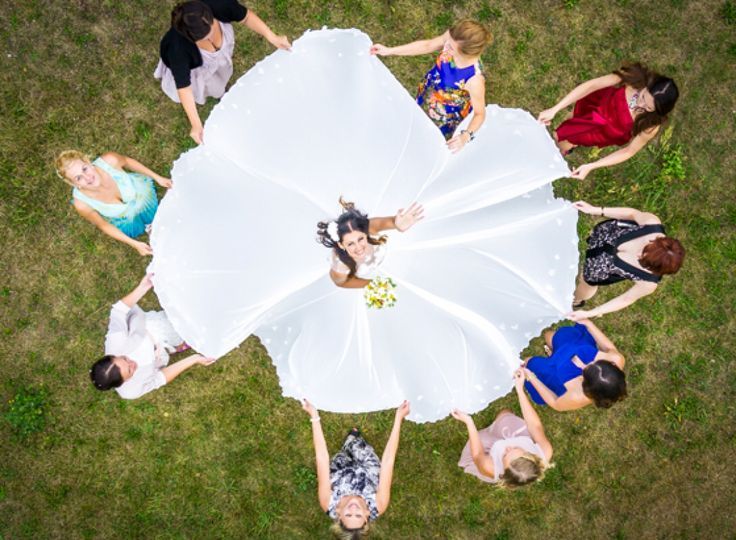
A drone is a tiny remote-controlled aircraft with a camera that can capture aerial photos and videos. An increasing number of newlyweds opt to have their weddings photographed by drone. A drone photographer may significantly improve the quality of your wedding album and video without breaking the bank.
Though not all weddings or settings are suitable for using drones, if you’re looking to get some unique shots of your big day from above, hiring a professional could be worth it. Looking to learn more? Find out why hiring a drone wedding photographer in Dallas is a great plan!
Drones are best for outdoor events, although they may be used inside. If a place has challenging terrain, a photographer may not acquire a lovely image from the ground. Due to drones’ mobility, you may be a little more creative with your photographs to capture:
- 360-degree venue view
- Overhead reception party view
- Bride walking down aisle video
Here are five tips by R.Romero Photography service to take your drone wedding photography to the next level:
1. Prevent drone and distant connection issues:
To optimize your drone’s remote connectivity, take precautions. Make sure your drone antennae point out and up and operate it away from your vehicle or any obstructions (walls, car doors, etc.) that might modify or interrupt its signal to your remote.
A stronger signal means better control and visibility, so you can record the most excellent compositions and avoid losing your drone and bringing it home.
2. Be aware of the UAV forecast:
Check the weather before shooting to prepare ahead. Before shooting with your drone, check the UAV forecast. This is critical for the pilot, the plane, and nearby persons and structures. It informs you of off-limits locations, the weather, how many GPS satellites are operational, and more.
3. Create shadows and light effects:
As the primary component of every photograph, light significantly impacts the overall feel, atmosphere, and message conveyed. Light and shadow may be captured in novel ways while shooting with a drone, particularly in the evening. Take advantage of being far above the earth to get those dramatic images just after dawn or before sunset and see how the shadows alter the landscape.
4. Compose using the thirds grid:
Image composition is crucial. It controls the arrangement of visual components inside the frame, negative and positive space, and color balance. This isn’t an issue when using a camera with a few hours of battery life, but not so with drones. Most drones fly for 25-30 minutes.
Frame your photographs with the thirds grid overlay to guarantee perfect composition. Drone cameras contain a thirds grid (in the app) to assist users in framing their photographs more properly, enhancing compositions. Using an overlay grid helps you get your composition correct the first time and avoids excessive cropping in post-processing.
5. Filters lens:
In adverse lighting circumstances, lens filters are like conventional ground photography. They help manage sensor light, reduce reflections and glare, and improve colors.
Filters may not be on your must-have drone photography gear list, but they are vital. Each filter has a unique function. Before buying a drone filter, consider the sorts of images you generally take, the time of day you shoot, and the location you shoot in (whether there are bodies of water nearby, for example).